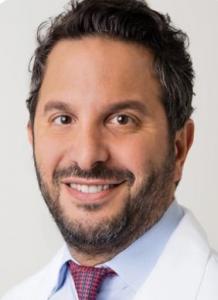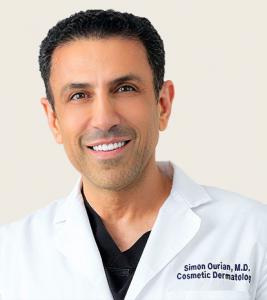Cardiologist Dr. Robert Segal with Manhattan Cardiology explains symptoms, actions and tests surrounding heart attack diagnosis, plus prevention tips
— Dr. Robert Segal
STAMFORD, CT, UNITED STATES, June 1, 2023/EINPresswire.com/ — Heart attack symptoms may be subtle or severe, including chest pain or pressure, shortness of breath, nausea and dizziness. But for the 805,000 Americans who suffer one every year, a prompt diagnosis should be the highest priority, according to cardiologist Dr. Robert Segal, the founder of Manhattan Cardiology.
Someone in the United States has a heart attack every 40 seconds, according to the Centers for Disease Control and Prevention (CDC). Astoundingly, about 1 in 5 of the cardiac events are silent, meaning the person isn’t aware of any symptoms. But all cases of heart attack—known formally as myocardial infarction—occur when blood flow to the heart is reduced or blocked. This can happen when cholesterol deposits called plaque build up or rupture, forming a clot.
“Some people disregard less-severe heart attack symptoms, thinking they have indigestion or another minor ailment instead,” says Dr. Segal, a fellow of the American College of Cardiology whose research has been published in many respected medical journals. “Others experience warning signs days or weeks before the actual heart attack, such as fleeting chest pain called angina.”
But ignoring any heart attack symptoms—which can also include discomfort that spreads to the shoulder, arm, back, neck or jaw—comes at a steep price: About 12% of those who have a heart attack will die from it, according to the CDC. “There’s good news in that statistic, however,” Dr. Segal points out. “It means the vast majority of will live—and the odds of a happy ending only increase with immediate medical attention.”
What does diagnosis involve?
Someone who suspects they’re having a heart attack should never attempt to drive themselves to an emergency room, Dr. Segal emphasizes. “Immediately call 911 or have someone drive you to the hospital,” he says.
Once there, doctors typically perform various tests to determine how well the heart is beating and confirm if a heart attack has occurred. These diagnostic tests include:
· Blood tests that check for heart proteins that seep into the blood—called cardiac markers—after a heart attack.
· EKG/ECG (electrocardiogram) to record electrical signals in the heart, with waves displayed on a monitor or a strip of printed paper.
· Echocardiogram to create images of how blood is moving through the heart and valves using ultrasound.
· Heart Monitor to detect arrhythmia or atrial fibrillation (AF)
· Chest X-ray to reveal the size and condition of the heart and lungs.
· Cardiac catheterization (angiogram) to reveal coronary artery blockages using dye that flows through a long, thin tube inserted into an artery.
· Computed tomography angiography (CTA) to create images of the heart and determine blockages.
“The technology doctors have now to diagnose heart attacks and other cardiovascular conditions is breathtaking,” Dr. Segal says. “That’s another strong reason to seek rapid care. The quicker someone gets diagnosed, the quicker treatment can begin to restore proper blood flow to the heart.”
Heart health tips
Heart attack treatment is highly individualized, depending on the cause and severity of a person’s attack. It can include medication, surgery and other procedures to break up blood clots, reduce stress on the heart, and improve overall blood flow.
“But the ideal, of course, is to prevent a heart attack from happening in the first place,” Dr. Segal says. To avoid a heart attack, he offers these heart health tips.
· Exercise: Whether it’s walking, cycling, swimming or other brisk movement, people should aim to exercise an average of 30 minutes, 5 days a week. “Someone who’s already had cardiovascular problems should ask their doctor for personalized exercise guidance,” he suggests.
· Aim for heart-healthy foods: Limit choices with a lot of saturated fat—such as red meat—as well as processed carbohydrates and sugars. Instead, opt for whole grains, vegetables, fruits, and lean proteins such as chicken, fish and beans.
· Strive for weight control: “Exercise and smart eating patterns go a long way toward controlling weight, lowering the chances of high blood pressure, high cholesterol, and diabetes,” Dr. Segal says.
· Don’t smoke: Smoking is the leading cause of preventable deaths in the United States and a huge risk factor for heart attack, he says.
· Get regular checkups: A doctor can keep tabs on important risk factors for heart attack, including cholesterol, blood pressure, and sugar levels, at annual physicals.
“Most heart attacks are preventable with commonsense, heart-healthy lifestyle measures,” Dr. Segal says. “No one wants to suffer a heart attack, but smart, strategic tactics can avert that life-threatening scenario and lead to a longer, more vigorous life.”
Manhattan Cardiology is the premier facility for preventive cardiology treatment in New York. Our cardiologists practice under the guiding principle that early detection is the best form of prevention. www.manhattancardiology.com
Dr. Robert Segal is a board-certified cardiologist and the founder of Manhattan Cardiology, Medical Offices of Manhattan and co-founder of LabFinder. www.manhattancardiology.com www.medicalofficesofmanhattan.com www.LabFinder.com
Contact:
www.mcprpublicrelations.com
Melissa Chefec
MCPR, LLC
+1 2039686625
[email protected]
![]()
Originally published at https://www.einpresswire.com/article/636925638/when-a-heart-attack-is-suspected-what-happens-next
The post When a Heart Attack is Suspected, What Happens Next first appeared on Beauty Ring Magazine.
Beauty - Beauty Ring Magazine originally published at Beauty - Beauty Ring Magazine




